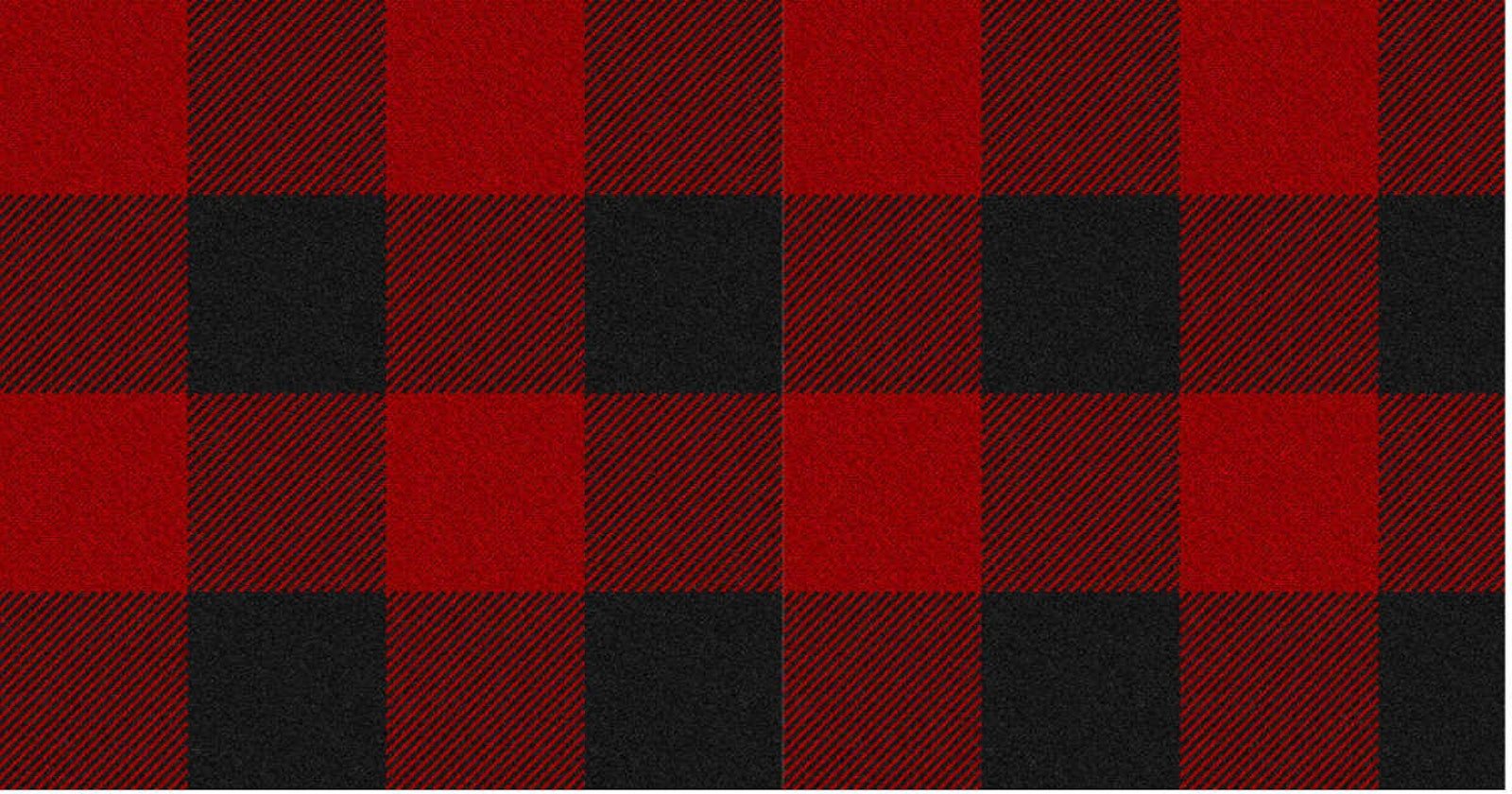While many plaids evoke images of Scotland, buffalo plaid is just so very American. Looking at the big checks of red and black, it's hard not to think of Paul Bunyan, cowboys, and perhaps even the Seattle grunge scene of the 1990s. But wait! This uniquely American plaid is actually not American at all. 
Paul Bunyan statue
in Bangor, Maine
wearing buffalo plaid.
Photo by Dennis Jarvis
The buffalo plaid is actually the Rob Roy MacGregor tartan, and it was brought to the United States by Jock McCluskey, one the descendants of that Scottish folk hero. According to the legend, Jock was a fierce warrior respected by the Native Americans and white men alike. Jock lived in the American West during the violent American Indian Wars. It was a time of conflict and violence, and in the Native American's persecution he saw his own family's fall from nobility to outlaws.
And so Jock McCluskey, descendent of Rob Roy MacGregor (also known as the Scottish Robin Hood) became a trusted trader who exchanged buffalo pelts for a number of finished goods, including woven woolen blankets bearing his family's bright black and red tartan. These blankets were particularly coveted for the bright colors. According to Jock's great nephew, the Lakota Sioux and Cheyenne warriors believed the blankets to be a good luck talisman and would put them on their horses during battle.
Even more interestingly, at least for those of us interested in the history of textiles, apparently neither the Native Americans nor those living at the U.S. Army outpost could pronounce the Gaelic word for blanket, pladger, and instead referred to them as plaid. This is why Americans use the term plaid instead of tartan.

